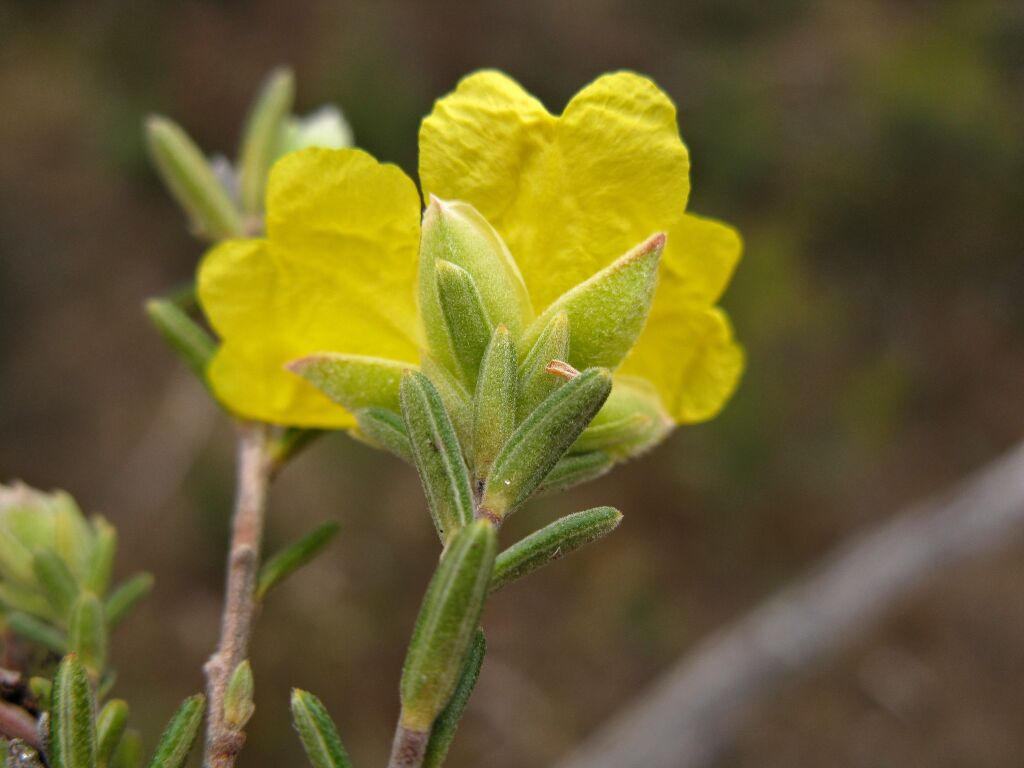Hibbertia devitata
ToelkenErect to spreading shrubs to 0.8 m high; branches puberulent to glabrescent. Vestiture of tubercle-based stellate hairs often with unequal branches, and hooked simple hairs. Leaves linear to linear-elliptic, 3–7(–22) mm long, (0.9–)1–1.3(–1.5) mm wide, puberulent to glabrescent, rarely pubescent; apex acute to obtuse; margins revolute, touching the raised, broader central ridge; petiole 0–0.7 mm long; leaf axils lacking tufts of hair. Flowers sessile, rarely with peduncles up to 14 mm long, terminal, but often on short shoots, subtended by few linear-lanceolate bracts 2.2–3.4 mm long; sepals (5.2–)6–6.7(–7.3) mm long, subequal, puberulous, sometimes with longer stellate and/or hooked simple hairs; petals obovate, (4–)6–9(–12) mm long, yellow; stamens (5–)6–8(–12) in one cluster; filaments free to connate for up to half their length; carpels 2, tomentose. Flowers (Jun.–)Aug.–Dec.
LoM, Wim, GleP, GGr, DunT. Also SA. Widespread in western Victoria in a range of habitats, commonly in mallee, dry scrub and open woodland.
This species is closely allied to Hibbertia riparia. Both species are highly variable. Hibbertia devitata typically has shorter, often somewhat terete leaves (due to the central ridge distinctly bulging out from the revolute margins, rather than sitting ± flush with the margins as in H. riparia). It may be distinguished from H. riparia by the sparsely hairy branches that lack tufts of hair in leaf axils, and the hooked simple hairs on leaves and sepals.
 Spinning
Spinning
